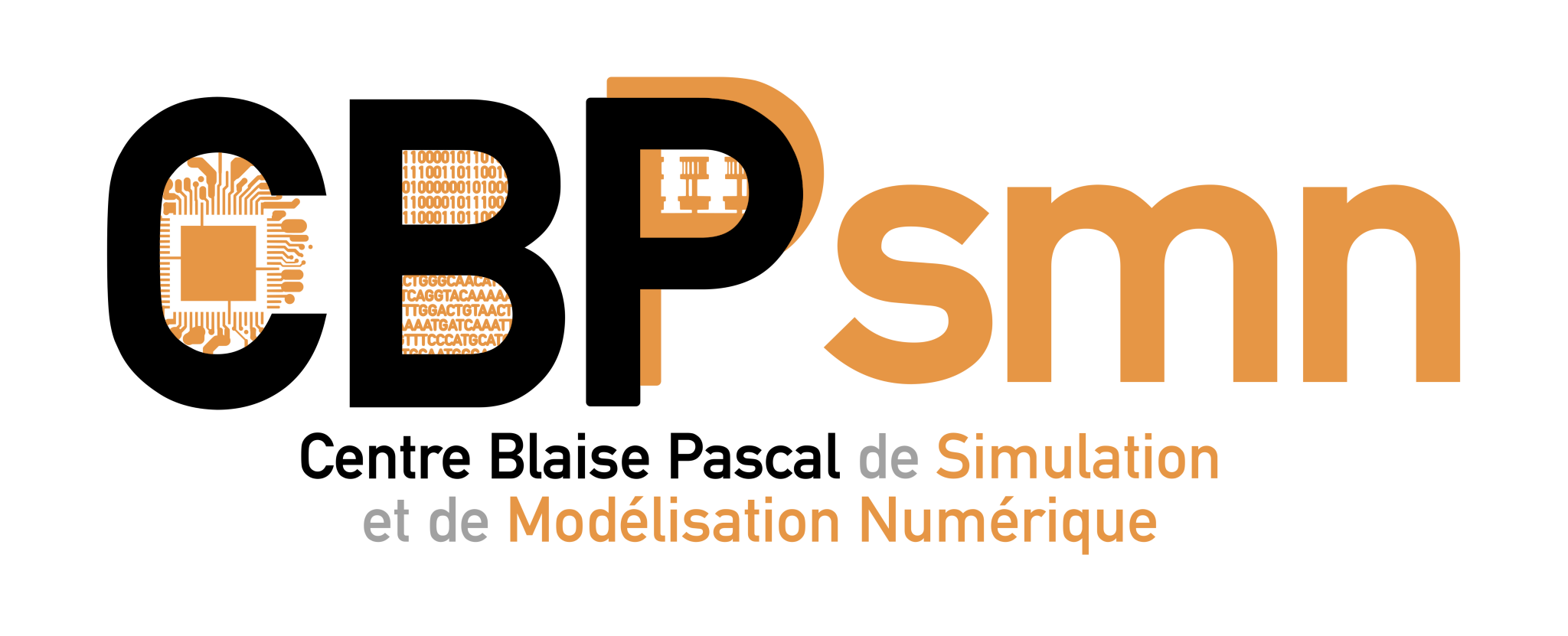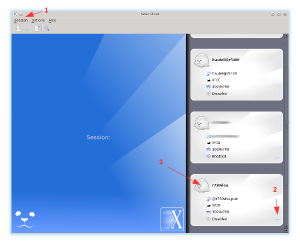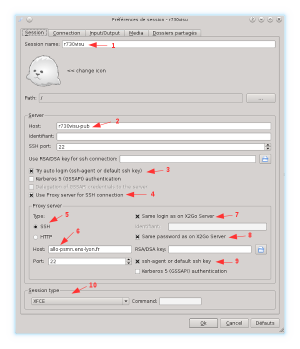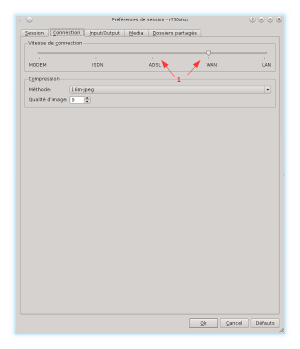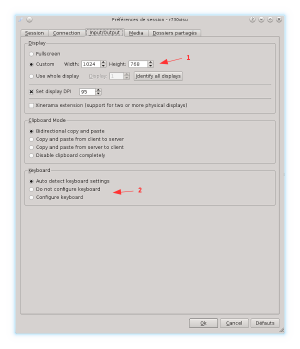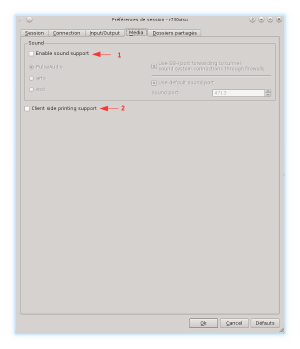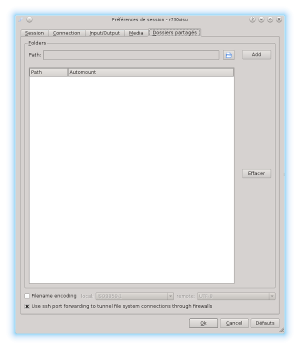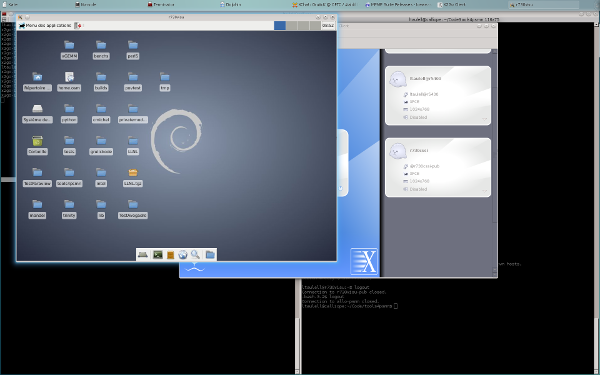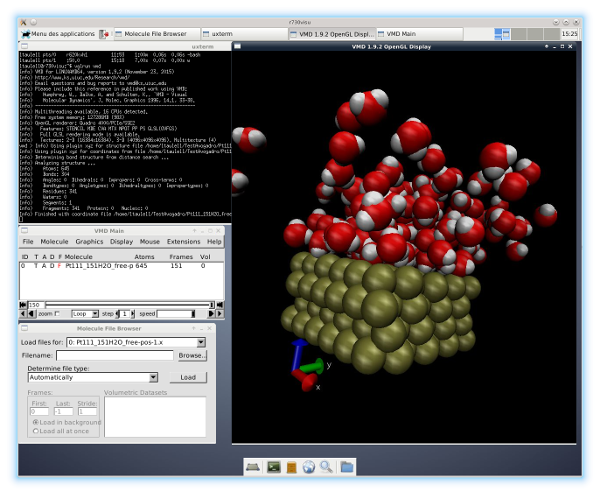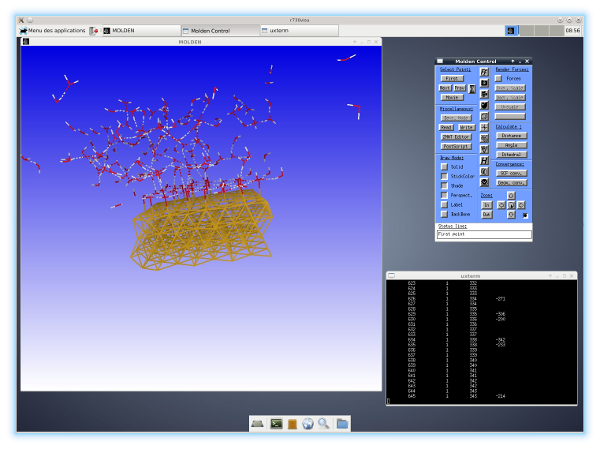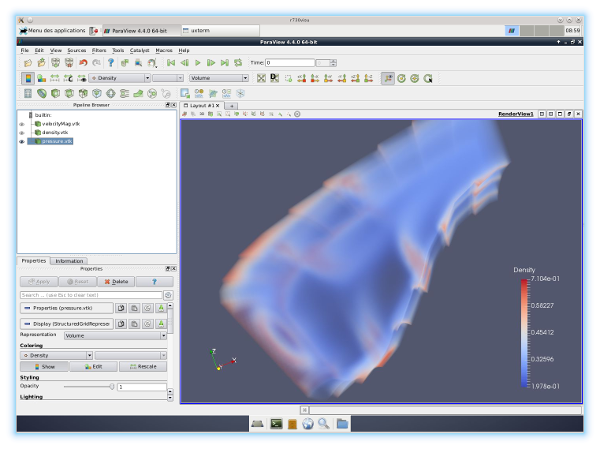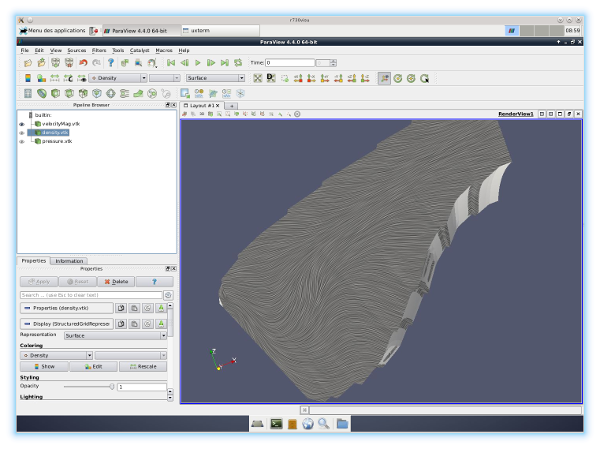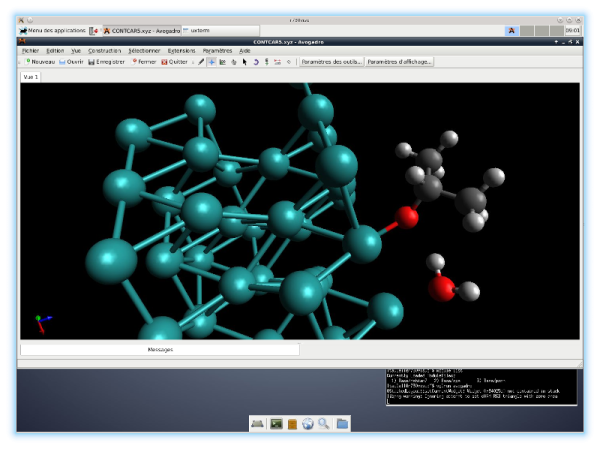Ceci est une ancienne révision du document !
Visualization server
The r730visu server is dedicated to extensive visualization (OpenGL/Mesa/CUDA8) at PSMN.
It is identical to the machine belonging to the r730gpgpu group. It is accessible using x2go and has a hardware accelerator NVidia Quadro4000©.
Finally, and most importantly, the server has access to the /scratch/e5-2670-gfs-scratch (scratch system common to E5-* queues.
r730visu is not a submission node.
This machine was set up thanks to the preparatory work, recipes and integrations carried out on the CBP experimental platform.
Prerequisites
- Installer x2go (x2goclient) sur le poste utilisateur (Linux, Mac ou Windows ⇒ http://wiki.x2go.org/doku.php )
Configure the x2goclient
- New session
- Session → New,
- You can return to the parameters by clicking on the small arrowhead,
- The session is saved in this white rectangle.
- Parameters: Tab Session
- Name the session,
- Host = r730visu,
- Try auto login → Checked,
- Use proxy server → Checked,
- SSH → Checked,
- Host = allo-psmn.psmn.ens-lyon.fr,
- Same login → Checked,
- Same password → Checked,
- ssh-agent → Checked,
- Session type =
XFCE
.
 WARNING : the
WARNING : the Session type NEED to be SET TO XFCE 
- Parameters: Tab Connection
- Parameters: Tap Input/Output
- Customize the screen size, or leave in Full/whole mode, your choice,
- If necessary, force keyboard settings (Mac and Windows).
- Parameters : Tab Media
- Parameters: Tab Directory
Connection
Résultat attendu :
Utilisation
Chaque application installée dans l'environnement PSMN peut être utilisée telle quelle.
Pavé numérique
Si votre pavé numérique n'est pas reconnu, dans un terminal, executez le programme numlockx.
modulefiles
Pour chaque application nécessitant le chargement d'un modulefile, il faut, depuis un terminal, loader le modulefile puis exécuter l'application.
VirtualGL
Pour chaque application nécessitant une accélération matérielle (OpenGL/GLX/GLSL/…), après le chargement du modulefile correspondant, il faut préfixer l'appel à l'application par l'appel à VirtualGL : vglrun MyApp
Exemples
- VMD
Dans un terminal :
source ~/.profile module load VMD/1.9.2 vglrun vmd
- molden/gmolden
Dans un terminal :
source ~/.profile module load Molden/5.4 vglrun gmolden
- ParaView
Dans un terminal :
source ~/.profile module load ParaView/4.4.0 vglrun paraview
- Avogadro
Dans un terminal :
source ~/.profile vglrun avogadro
